当前位置:网站首页>Summary of "reversal" problem in challenge Programming Competition
Summary of "reversal" problem in challenge Programming Competition
2022-07-05 08:52:00 【Qizi K】
《 Challenge Programming Competition 》 And “ reverse ” The problem summary
Mengxin is writing a summary again
“ reverse ” The problem is 《 Challenge Programming Competition 》P150 Left and right ~
Refuse to ! most ! search ! Cable !
This kind of problem has the following characteristics :
1. Mostly concentrated in one dimension / In two dimensions , The range of two-dimensional data is generally very small ( After all, you need some enumeration ); It's for an interval / Invert several adjacent grids ;
2. Generally use search (dfs/bfs) It cannot be completed within the specified time ( Unless the data is too small );
3. Each grid has two states ( just / back ), The reverse order of intervals has no effect on the final result ;
4. It is more than to reverse a lattice more than twice , So you just need to %2 You can know the result of inversion .
To borrow a word :
“ The reverse method is a little like the ruler method , They all limit a range , Move forward , After the tail moves , We need to reduce the influence of the tail .”
Here are some classic topics :
One dimensional inversion :
Face The Right Way POJ - 3276
The Water Bowls POJ - 3185
Two dimensional inversion :
Fliptile POJ - 3279
The Pilots Brothers’ refrigerator POJ - 2965
Flip Game POJ - 1753
EXTENDED LIGHTS OUT POJ - 1222
A. Face The Right Way POJ - 3276
tips: We can argue that , this “ Reverse continuous K Head ox ” Only according to The serial number is incremented The order of ( such as k = 3 , reverse 7 6 8 Three consecutive cows , It can be considered as 6 No. is the starting point , Continuous inversion 6 7 8 Three cows , The order has no effect ). namely : The problem is transformed into finding the set of intervals that need to be reversed .
For the end Insufficient k Head ox , To judge directly , No need to reverse ( Have not enough k A cow ).
#include<cstdio>
#include<cstring>
const int maxn = 5005;
int book[maxn],flip[maxn],n,k,m,ans,reck;
char c;
int solve(int k){
memset(flip,0,sizeof(flip));
int sum = 0, res = 0; //res Used to count the answers ( Number of reversals )
for(int i = 1; i <= n - k + 1; ++i){
if((book[i] + sum) % 2 == 0) flip[i] = 0;
else sum++, res++, flip[i] = 1;
if(i - k >= 0) sum -= flip[i - k + 1]; // Prepare for the next position
}
for(int i = n - k + 2; i <= n; ++i){
// Direct judgment
if((book[i] + sum) % 2 != 0) return -1;
if(i - k >= 0) sum -= flip[i - k + 1];
}
return res;
}
int main(){
scanf("%d",&n); ans = 1e9;
for(int i = 1; i <= n; ++i){
getchar();
scanf("%c",&c);
book[i] = (c == 'B' ? 1 : 0);
}
for(k = 1; k <= n; ++k){
int tmp = solve(k);
if(tmp != -1 && ans > tmp){
ans = tmp;
reck = k;
}
}
printf("%d %d\n",reck,ans);
return 0;
}
B.The Water Bowls POJ - 3185
tips: Similar to the previous question , It just limits each time you reverse yourself and your neighbors 2 Lattice . You can do it directly , Don't use it like the last question sum Record .【 The only difference is , If it is both ends Lattice of , Can only reverse 2 individual ; The middle grid can be reversed 3 individual ,k Not a fixed value 】
Pay attention to the classified discussion : The first lattice does not reverse / The first lattice is reversed .
We think , Start at the far left , When a grid is fixed , Only the latter grid can change him ( Because the one in front of him has been settled ), Therefore, according to the current state of the grid Sole determination The number of inversions of the next lattice .
#include<cstdio>
#include<cstring>
#include<algorithm>
using namespace std;
int book[25],flip[25],minn,tmp[25];
void solve1(){
// The first lattice does not reverse
int cnt = 0;
memcpy(tmp, book, sizeof(book));
memset(flip, 0,sizeof(flip));
for(int i = 2; i <= 20; ++i){
if((flip[i - 1] + tmp[i - 1]) % 2 == 0) continue; // Whether the current grid is reversed , Depends on the state of the previous grid
else flip[i]++, tmp[i + 1]++, cnt++; // The current grid is reversed , Next grid The state will also be affected , use tmp++ Express . The reason to use memcpy, Do not want to change the original data
}
if((flip[20] + tmp[20]) % 2 == 0)
minn = min(minn, cnt);
}
void solve2(){
// The first lattice is reversed
int cnt = 0;
memset(flip, 0,sizeof(flip));
memcpy(tmp, book, sizeof(book));
flip[1] = 1, tmp[2]++, cnt++;
for(int i = 2; i <= 20; ++i){
if((flip[i - 1] + tmp[i - 1]) % 2 == 0) continue;
else flip[i]++, tmp[i + 1]++, cnt++;
}
if((flip[20] + tmp[20]) % 2 == 0)
minn = min(minn, cnt);
}
int main(){
minn = 1e5;
for(int i = 1; i <= 20; ++i)
scanf("%d",&book[i]);
solve1(); solve2();
printf("%d",minn);
return 0;
}
/* 0 0 1 0 0 0 0 0 0 0 0 0 0 0 0 0 0 0 0 0 2 */
It can also be used for reference A Writing method of questions , Twice ( The first element is changed / Don't change ). Note that when modifying the last data , It can only be modified 2 individual , So judging is just judging the last one , Not from the second n-k+2 individual .
Another way of writing :
#include<cstdio>
#include<cstring>
#include<algorithm>
using namespace std;
const int maxn = 25;
int book[maxn],filp[maxn],n,k,minn;
int solve(int k){
memset(filp,0,sizeof(filp));
int sum = 0, res = 0;
for(int i = 1; i <= n - 1; ++i){
if((book[i] + sum) % 2 == 0) filp[i] = 0;
else sum++, res++, filp[i] = 1;
if(i - k >= 0) sum -= filp[i - k + 1];
}
return (book[n] + sum) % 2 != 0 ? -1 : res;
}
int main(){
n = 20;
for(int i = 1; i <= n; ++i)
scanf("%d",&book[i]);
int tmp1 = solve(3); //k = 3, The first one does not reverse
book[1]++, book[2]++; // The first reversal is equivalent to the number +1, The first 1、2 Data +1
int tmp2 = solve(3) + 1;
printf("%d",min(tmp1,tmp2));
return 0;
}
C.Fliptile POJ - 3279
Very classic two-dimensional inversion . because n,m Up to 15, use dfs/bfs Must be TLE.
Each grid can change itself and up, down, left and right , So you can't do that like one-dimensional inversion ( Because it can change (1,1) You can also have (1,2) and (2,1), There is only one way to change the leftmost bull in the last question , Because only one interval contains 1).
We can Enumerate all reversals in the first row , After the reversal of the first line is determined , Only the next line can change the state of the previous line , And so on , Until the last line , Then check whether the last line is 0 that will do .
tips: State compression , Enumeration of collections in binary .
#include<cstdio>
#include<cstring>
using namespace std;
const int maxn = 20;
int n,m,book[maxn][maxn],flip[maxn][maxn],ans[maxn][maxn];
int dir[5][2] = {
{
1,0},{
-1,0},{
0,0},{
0,1},{
0,-1}};
int getcolor(int x, int y){
int c = book[x][y];
for(int k = 0; k < 5; ++k){
int tx = x + dir[k][0], ty = y + dir[k][1];
if(tx < 1 || ty < 1 || tx > m || ty > n) continue;
c += flip[tx][ty];
}
return c % 2;
}
int calc(){
for(int i = 2; i <= m; ++i)
for(int j = 1; j <= n; ++j)
if(getcolor(i - 1, j)) flip[i][j] = 1;
for(int j = 1; j <= n; ++j)
if(getcolor(m, j)) return -1;
int cnt = 0;
for(int i = 1; i <= m; ++i)
for(int j = 1; j <= n; ++j)
cnt += flip[i][j];
return cnt;
}
void solve(){
int res = -1;
for(int s = 0; s < 1 << n; ++s){
memset(flip, 0, sizeof(flip));
for(int j = 1; j <= n; ++j)
flip[1][j] = s >> (j - 1) & 1;
int num = calc();
if(num >= 0 && (res < 0 || res > num)){
res = num;
memcpy(ans, flip, sizeof(flip));
}
}
if(res < 0) printf("IMPOSSIBLE\n");
else{
for(int i = 1; i <= m; ++i)
for(int j = 1; j <= n; ++j)
printf("%d%c",ans[i][j], j == n ? '\n' : ' ');
}
}
int main(){
scanf("%d%d",&m,&n);
for(int i = 1; i <= m; ++i)
for(int j = 1; j <= n; ++j)
scanf("%d",&book[i][j]);
solve();
return 0;
}
D.Flip Game POJ - 1753
tips: Similar questions , It's just n = m = 4, The data range is greatly reduced , And “ Turn into the same side ” It can all be positive , It can also be all anti , It can be discussed in two categories .
The data range is too small, resulting in dfs You can go through , But it's better to reverse .
#include<cstdio>
#include<cstring>
#include<algorithm>
using namespace std;
int book[10][10],flip[10][10];
int dir[5][2] = {
{
1,0},{
-1,0},{
0,0},{
0,1},{
0,-1}};
char c;
int getcolor(int x ,int y){
int c = book[x][y];
for(int k = 0; k < 5; ++k){
int tx = x + dir[k][0], ty = y + dir[k][1];
if(tx < 1 || ty < 1 || tx > 4 || ty > 4) continue;
c += flip[tx][ty];
}
return c % 2;
}
int calc1(){
for(int i = 2; i <= 4; ++i)
for(int j = 1; j <= 4; ++j)
if(getcolor(i - 1, j)) flip[i][j] = 1;
for(int j = 1; j <= 4; ++j)
if(getcolor(4, j)) return -1;
int cnt = 0;
for(int i = 1; i <= 4; ++i)
for(int j = 1; j <= 4; ++j)
cnt += flip[i][j];
return cnt;
}
int calc2(){
for(int i = 2; i <= 4; ++i)
for(int j = 1; j <= 4; ++j)
if(getcolor(i - 1, j) == 0) flip[i][j] = 1;
for(int j = 1; j <= 4; ++j)
if(getcolor(4, j) == 0) return -1;
int cnt = 0;
for(int i = 1; i <= 4; ++i)
for(int j = 1; j <= 4; ++j)
cnt += flip[i][j];
return cnt;
}
void solve(){
int res1 = -1, res2 = -1;
for(int s = 0; s < 1 << 4; ++s){
memset(flip, 0, sizeof(flip));
for(int j = 1; j <= 4; ++j)
flip[1][j] = s >> (j - 1) & 1;
int num1 = calc1();
if(num1 >= 0 && (res1 == -1 || res1 > num1)) res1 = num1;
}
for(int s = 0; s < 1 << 4; ++s){
memset(flip, 0, sizeof(flip));
for(int j = 1; j <= 4; ++j)
flip[1][j] = s >> (j - 1) & 1;
int num2 = calc2();
if(num2 >= 0 && (res2 == -1 || res2 > num2)) res2 = num2;
}
if(res1 == -1 && res2 == -1) printf("Impossible\n");
else if(res1 == -1) printf("%d",res2);
else if(res2 == -1) printf("%d",res1);
else printf("%d",min(res2, res1));
}
int main(){
for(int i = 1; i <= 4; ++i){
for(int j = 1; j <= 4; ++j){
scanf("%c",&c);
book[i][j] = (c == 'b') ? 1 : 0; //b yes 1
}
getchar();
}
solve();
return 0;
}
E.EXTENDED LIGHTS OUT POJ - 1222
tips: Same as 3279. Multi group input , And fixed m = 5, n = 6.
#include<cstdio>
#include<cstring>
using namespace std;
const int maxn = 10;
int t,n,m,book[maxn][maxn],flip[maxn][maxn],ans[maxn][maxn];
int dir[5][2] = {
{
1,0},{
-1,0},{
0,0},{
0,1},{
0,-1}};
int getcolor(int x, int y){
int c = book[x][y];
for(int k = 0; k < 5; ++k){
int tx = x + dir[k][0], ty = y + dir[k][1];
if(tx < 1 || ty < 1 || tx > m || ty > n) continue;
c += flip[tx][ty];
}
return c % 2;
}
int calc(){
for(int i = 2; i <= m; ++i)
for(int j = 1; j <= n; ++j)
if(getcolor(i - 1, j)) flip[i][j] = 1;
for(int j = 1; j <= n; ++j)
if(getcolor(m, j)) return -1;
int cnt = 0;
for(int i = 1; i <= m; ++i)
for(int j = 1; j <= n; ++j)
cnt += flip[i][j];
return cnt;
}
void solve(){
int res = -1;
for(int s = 0; s < 1 << n; ++s){
memset(flip, 0, sizeof(flip));
for(int j = 1; j <= n; ++j)
flip[1][j] = s >> (j - 1) & 1;
int num = calc();
if(num >= 0 && (res < 0 || res > num)){
res = num;
memcpy(ans, flip, sizeof(flip));
}
}
if(res < 0) printf("IMPOSSIBLE\n");
else{
for(int i = 1; i <= m; ++i)
for(int j = 1; j <= n; ++j)
printf("%d%c",ans[i][j], j == n ? '\n' : ' ');
}
}
int main(){
scanf("%d",&t);
for(int x = 1; x <= t; ++x){
m = 5, n = 6;
for(int i = 1; i <= m; ++i)
for(int j = 1; j <= n; ++j)
scanf("%d",&book[i][j]);
printf("PUZZLE #%d\n",x);
solve();
}
return 0;
}
F.The Pilots Brothers’ refrigerator POJ - 2965
tips: A little bit different . The above two-dimensional inversion only changes itself and up, down, left and right , In addition to changing yourself , It will also change your line 、 All cells in the column . Fixed size 4*4.
An important discovery : For example, the second in the first line is +, As long as the grid of the row and column where he is located is turned once , Will make the current + become - , But none of the other grids will change .( prove : The row of a grid / If the total number of inversions of the columns is even , The grid does not change ; Odd number , The grid is reversed . After the above operation , The number of reversals of the whole chessboard is odd except for this lattice (4 + 3 == 7), Other positions are even . You can start to calculate )
therefore , Find out + lattice , Just put all the grids in his row flip++, The final answer is all the grids (flip%2) Add up .
4*4 use dfs I can live , But using reverse thinking is obviously better than dfs Much faster .
#include<cstdio>
#include<utility>
#include<vector>
using namespace std;
int book[5][5], flip[5][5],ans;
char c;
vector<pair<int,int> > v;
vector<pair<int,int> > :: iterator it;
void change(int x, int y){
for(int i = 1; i <= 4; ++i) flip[x][i]++;
for(int i = 1; i <= 4; ++i) flip[i][y]++;
flip[x][y]--;
}
int main(){
for(int i = 1; i <= 4; ++i){
for(int j = 1; j <= 4; ++j)
scanf("%c",&c), book[i][j] = (c == '+') ? 1 : 0;
getchar();
}
for(int i = 1; i <= 4; ++i){
for(int j = 1; j <= 4; ++j){
if(book[i][j]) change(i, j);
}
}
for(int i = 1; i <= 4; ++i)
for(int j = 1; j <= 4; ++j){
ans += flip[i][j] % 2;
if(flip[i][j] % 2) v.push_back(make_pair(i, j));
}
printf("%d\n",ans);
for(it = v.begin(); it != v.end(); ++it)
printf("%d %d\n",it->first, it->second);
return 0;
}
边栏推荐
- 多元线性回归(梯度下降法)
- Count of C # LINQ source code analysis
- 轮子1:QCustomPlot初始化模板
- Latex improve
- Solutions of ordinary differential equations (2) examples
- Business modeling of software model | overview
- Golang foundation -- map, array and slice store different types of data
- Use and programming method of ros-8 parameters
- Task failed task_ 1641530057069_ 0002_ m_ 000000
- Configuration and startup of kubedm series-02-kubelet
猜你喜欢
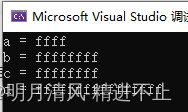
Classification of plastic surgery: short in long long long
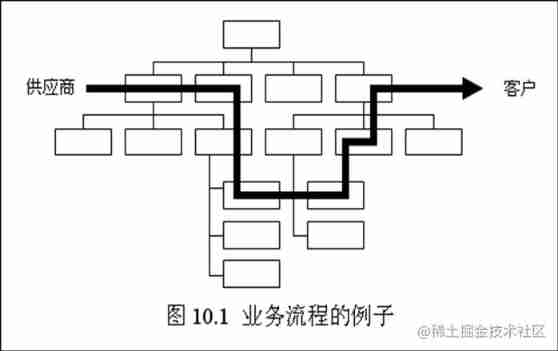
Business modeling | process of software model
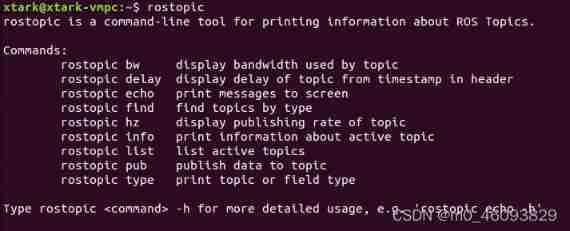
Ros- learn basic knowledge of 0 ROS - nodes, running ROS nodes, topics, services, etc
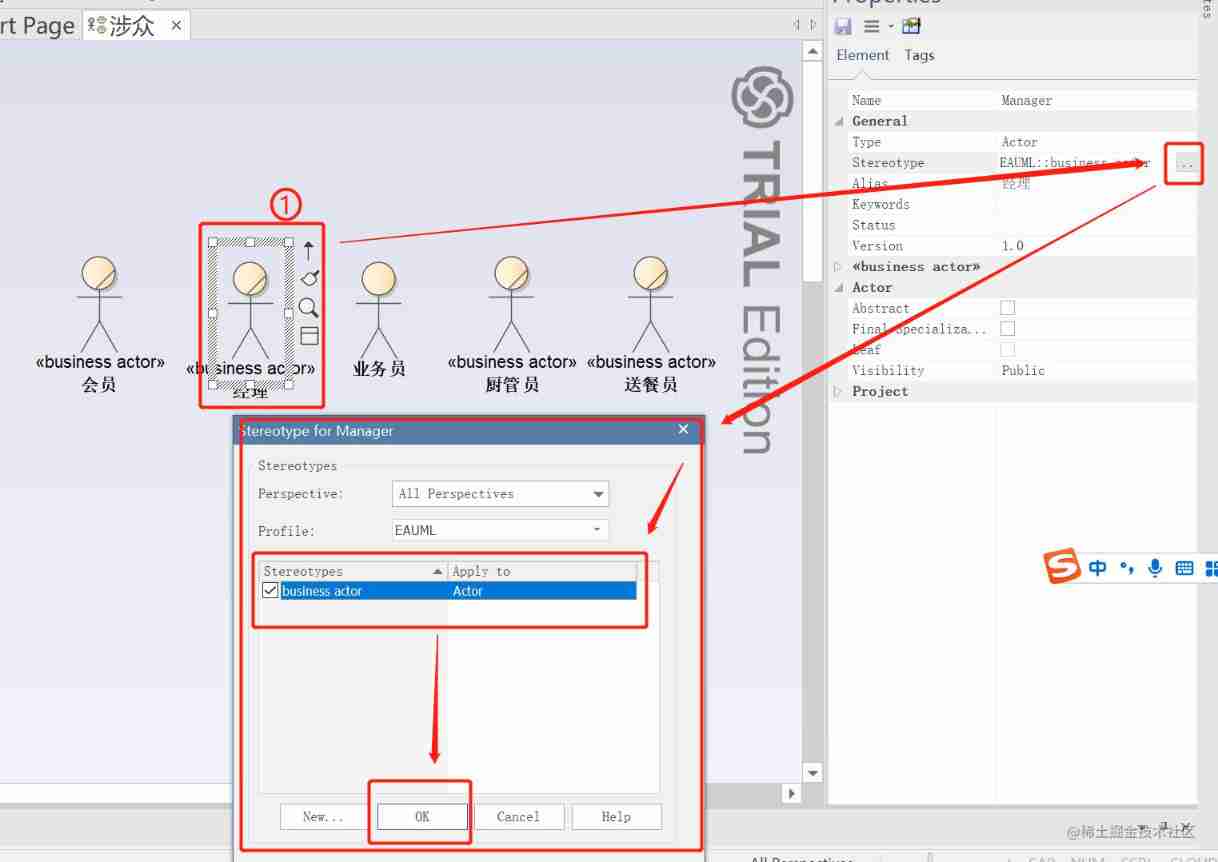
Business modeling of software model | stakeholders
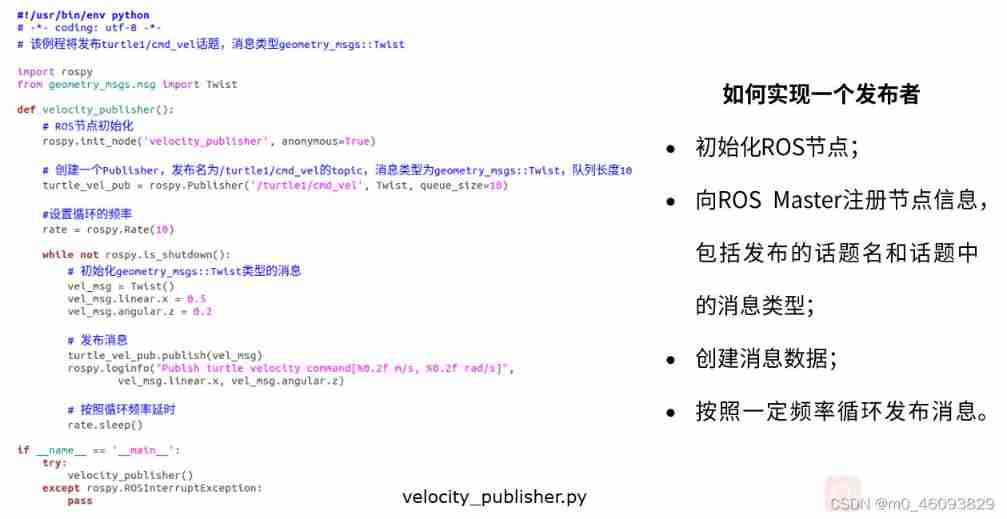
Programming implementation of ROS learning 2 publisher node
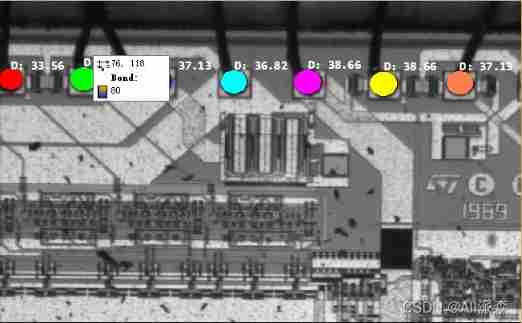
Halcon blob analysis (ball.hdev)

Illustration of eight classic pointer written test questions

Numpy 小坑:维度 (n, 1) 和 维度 (n, ) 数组相加运算后维度变为 (n, n)

Guess riddles (8)

Halcon color recognition_ fuses. hdev:classify fuses by color
随机推荐
Typescript hands-on tutorial, easy to understand
Blue Bridge Cup provincial match simulation question 9 (MST)
TF coordinate transformation of common components of ros-9 ROS
Search data in geo database
Guess riddles (8)
Numpy pit: after the addition of dimension (n, 1) and dimension (n,) array, the dimension becomes (n, n)
kubeadm系列-02-kubelet的配置和启动
Run menu analysis
Programming implementation of ROS learning 6 -service node
C#【必备技能篇】ConfigurationManager 类的使用(文件App.config的使用)
Halcon wood texture recognition
猜谜语啦(7)
Shift operation of complement
How to manage the performance of R & D team?
Meta tag details
c#比较两张图像的差异
Halcon blob analysis (ball.hdev)
An enterprise information integration system
Ros- learn basic knowledge of 0 ROS - nodes, running ROS nodes, topics, services, etc
OpenFeign